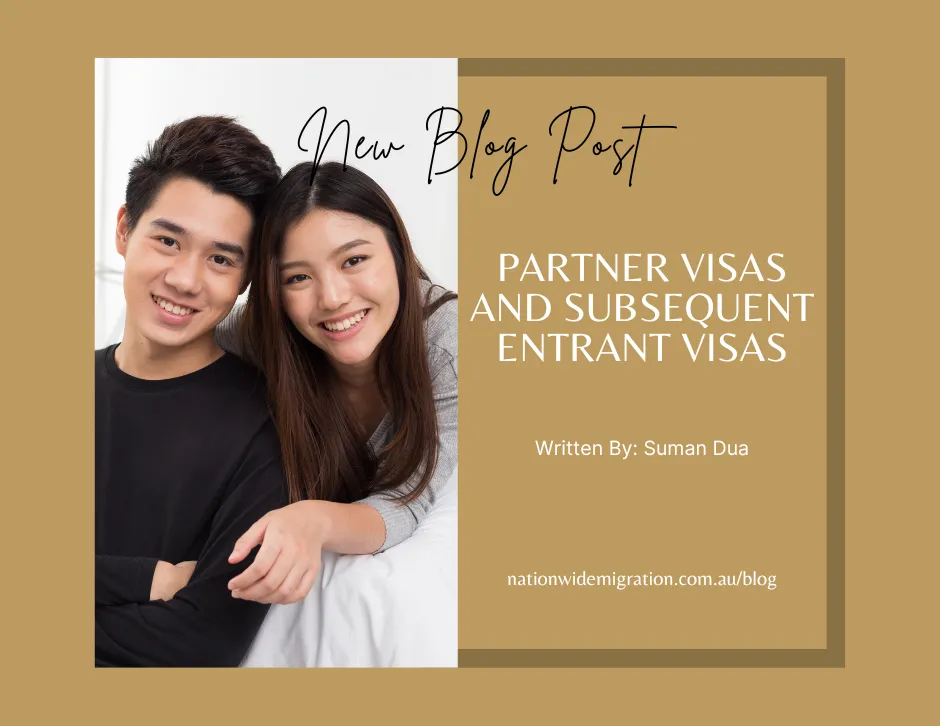June 21, 2023•3 min read
Suman Dua MARN 1800859Jun 21, 20233 min read
Are you considering applying for a Partner visa to bring your Spouse to Australia? In this blog post, we will discuss the different types of Partner visas nd Subsequent Entrant Visas available, the eligibility requirements, and the application process.
There are different visa pathways available under the partner visa program. There is a difference between the onshore and offshore lodgment of partner visa applications. Primarily there are three visa options available under the partner visa program:
Prospective Marriage SC300 Visa
Partner Visa SC 309 – Offshore – Temporary
Partner Visa SC 820 – Onshore – Temporary
A Prospective Marriage Visa is for applicants who intend to get married in Australia. Once the Prospective Marriage SC 300 visa is granted, the applicant has nine months to marry their partner in Australia. With SC 300 visa, the applicant has multiple entries, can study or work in Australia, and can submit a Partner visa application after the marriage with the partner.
Partner SC 309 visa application is an offshore Partner visa application. The visa has a two-stage process for the Permanent Residency pathway. At the grant of the first stage of the SC309 visa, the applicant can enter Australia and live with their partner or Spouse. With SC 309 visa, the applicant can work, study in Australia, and enroll in Medicare. The applicant can apply for a Permanent SC 100 visa in the second stage. To be eligible for an SC309 visa, the applicant must be in a genuine relationship with an Australian Citizen, Permanent Resident, or Eligible New Zealand Citizen.
Partner SC 820 visa application is an onshore Partner visa application. The visa has a two-stage process for the Permanent Residency pathway. The applicant can work and study in Australia and can enroll in Medicare. The applicant can apply for a Permanent SC 801 visa in the second stage. To be eligible for an SC820 visa, the applicant must be in a genuine relationship with an Australian Citizen, Permanent Resident, or Eligible New Zealand Citizen.
Some common other types of partner visas, or what we also call subsequent entrant or dependent visas, are for the Spouse of a:
In all types of Partner visas or dependent visas for the Spouse, it is very important to meet the four pillars of a relationship:
Finances
Evidence you and your partner share financial matters. Evidence can include:
Your household
Evidence you and your partner share domestic matters. Evidence can include:
Social matters
Evidence that others know about your relationship. Evidence can also include:
Commitment
Evidence you are committed to a long-term relationship with each other. Evidence must show that you:
Partner visas have a long and complicated application process. The requirement of documents and information may vary with each individual and couple and their circumstances. We will assess your current situation and advise on the best possible option available to you. Book a consultation with us.
